Abercrombie & Fitch Co. (A&F) is an American lifestyle retailer with a storied past and a unique evolution in the fashion industry. Headquartered in New Albany, Ohio, the company oversees three offshoot brands: Abercrombie Kids, Hollister Co., and Gilly Hicks. From its inception as an outfitter for elite outdoorsmen in 1892, A&F has transformed into a modern fashion powerhouse known for its contemporary clothing and youthful image. This transition has seen the brand through significant shifts, including changes in ownership, market focus, and branding strategies.
The original Abercrombie & Fitch was founded by David T. Abercrombie, who aimed to provide high-quality gear for outdoor enthusiasts. By 1900, Ezra Fitch, a devoted customer and wealthy lawyer, invested in the company, eventually becoming the sole owner. Under Fitch’s leadership, A&F gained a reputation for outfitting famous expeditions and high-profile clients, including President Theodore Roosevelt and author Ernest Hemingway. Despite this prestigious clientele, the company struggled in the 1970s, leading to bankruptcy and a subsequent buyout by Oshman’s Sporting Goods, which repositioned A&F as a mail-order retailer.
A major turning point came in 1988 when The Limited, a Columbus-based retail conglomerate, acquired A&F and shifted its focus towards young adults. This rebranding effort, spearheaded by CEO Mike Jeffries in the 1990s, transformed A&F into a trendsetting label for teens, characterized by its provocative marketing and exclusive image. The launch of subsidiary brands like Abercrombie Kids and Hollister Co. further cemented its presence in the youth market, while a series of strategic changes in the 2000s and beyond aimed to modernize the brand and broaden its appeal.
Today, A&F is recognized for its blend of casual luxury and aspirational lifestyle marketing. The company has adapted to changing consumer preferences by focusing on customer service, reducing overtly sexualized advertising, and embracing a more inclusive and individualistic approach. With its historical significance and ongoing evolution, Abercrombie & Fitch remains a compelling case study in branding, market adaptation, and retail resilience. Understanding its logos and tags can offer valuable insights for vintage enthusiasts seeking to identify genuine pieces from different eras of A&F’s rich history.
Rare 90s Abercrombie & Fitch Advert before the brands hypersexualisation of the 00s
How to tell if Abercrombie & Fitch is vintage from the logo
Abercrombie & Fitch has a rich history dating back to 1892, with its logo evolving significantly over the decades. Initially known for its outdoor gear, the brand has shifted its focus multiple times, now being recognized for its modern and youthful fashion. The various logos used throughout the years can help in identifying vintage Abercrombie & Fitch items.
1892 to 1980s Abercrombie & Fitch logo
- The earliest logo features a simplistic design with the full name “Abercrombie & Fitch” written in a classic serif font.
- This logo represents the brand’s early focus on outdoor and expedition gear.
- It is characterized by a traditional and conservative style, reflecting the brand’s heritage.

1892 to 1980s Abercrombie & Fitch logo
1980s to 1990s Abercrombie & Fitch logo
- In this era, the logo underwent a significant change with a more modern and bold typeface.
- The logo is often seen on a label with prominent stitching, indicating a shift towards a more fashionable market.
- The serif font remains, but it is less formal and more aligned with casual wear.

1980s to 1990s Abercrombie & Fitch logo
1990s to now Abercrombie & Fitch logo
- The current logo includes the iconic moose emblem, representing a youthful and adventurous spirit.
- The text is clean and modern, with “Abercrombie & Fitch” often displayed in a sleek serif font.
- This logo is widely recognized and has been used consistently in various forms across the brand’s product lines.

1990s to now Abercrombie & Fitch logo

1990s to now Abercrombie & Fitch logo and symbol
How to tell if Abercrombie & Fitch is vintage from the tags
Abercrombie & Fitch has a rich history dating back to the late 19th century, with its tags reflecting the evolution of its branding and manufacturing practices. Vintage tags can be identified by their distinct features, materials, and design elements that have changed over the decades. Here’s a guide to help you identify vintage Abercrombie & Fitch garments based on their tags.
Abercrombie & Fitch has a rich history dating back to the late 19th century, with its tags reflecting the evolution of its branding and manufacturing practices. Until the late 1990s and early 2000s, most Abercrombie & Fitch clothing was manufactured in either England, Scotland, or the USA. Tags indicating these countries of manufacture are strong indicators of vintage items. From the late 1990s onwards, larger, shiny polyester washtags became common, typically featuring care instructions in multiple languages, marking more modern pieces.
Older wash tags from the 80s and 90s were smaller and usually had information in a single language, while tags from the 2000s onwards are larger and multilingual. Additionally, the presence of website addresses on tags, which started appearing in the 2000s, indicates a more recent garment. By examining these tag details—country of manufacture, the material and size of the washtags, and the presence of website addresses—you can effectively determine if an Abercrombie & Fitch piece is vintage.
Struggling to identify vintage tags or labels? Submit a picture on our vintage tag identification page, and we’ll help you out!
1950s vintage Abercrombie & Fitch tags
- Tags typically feature a simple and utilitarian design.
- Commonly include “Abercrombie & Fitch Co.” and “New York, Chicago, San Francisco.
- Often made with durable materials indicating high-quality outdoor goods.
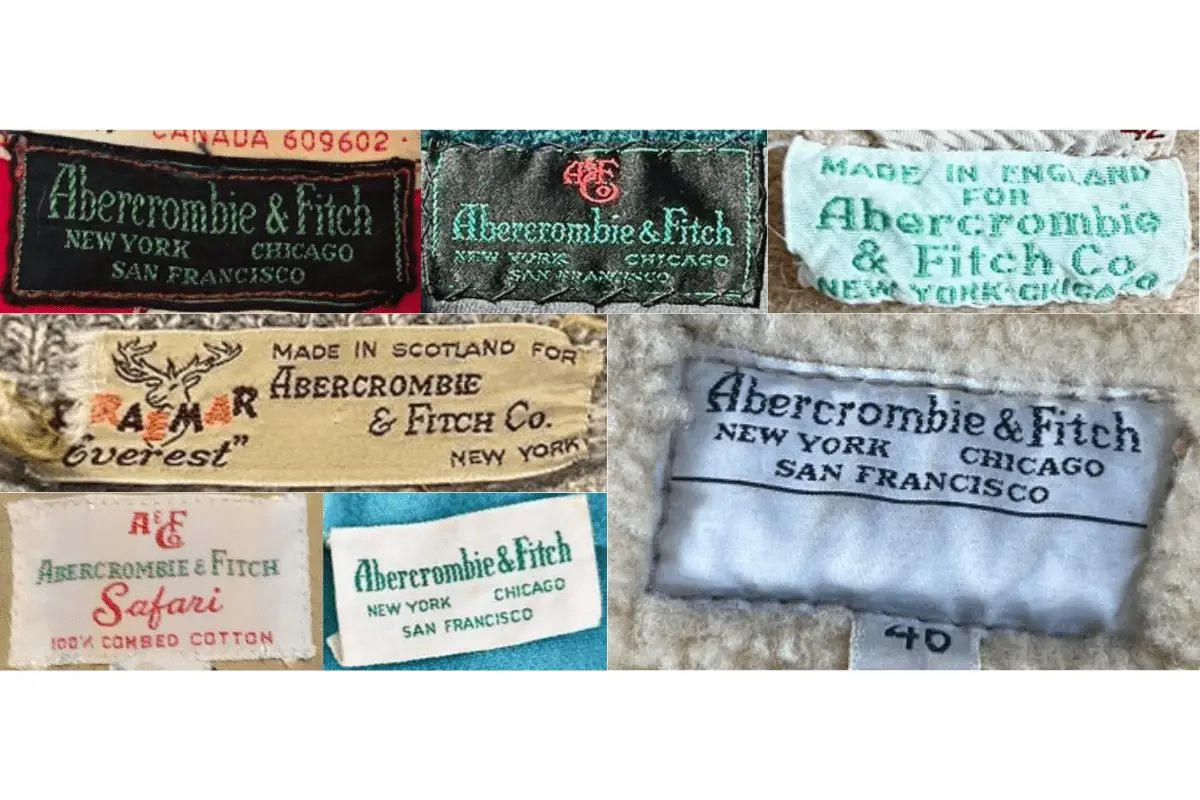
1950s Abercrombie & Fitch tags
1960s vintage Abercrombie & Fitch tags
- Include “Abercrombie & Fitch Co.” branding with a focus on outdoor and rugged quality.
- Tags frequently mention manufacturing locations such as Scotland or Ireland.
- Use of heavier fabrics and materials for the tags.
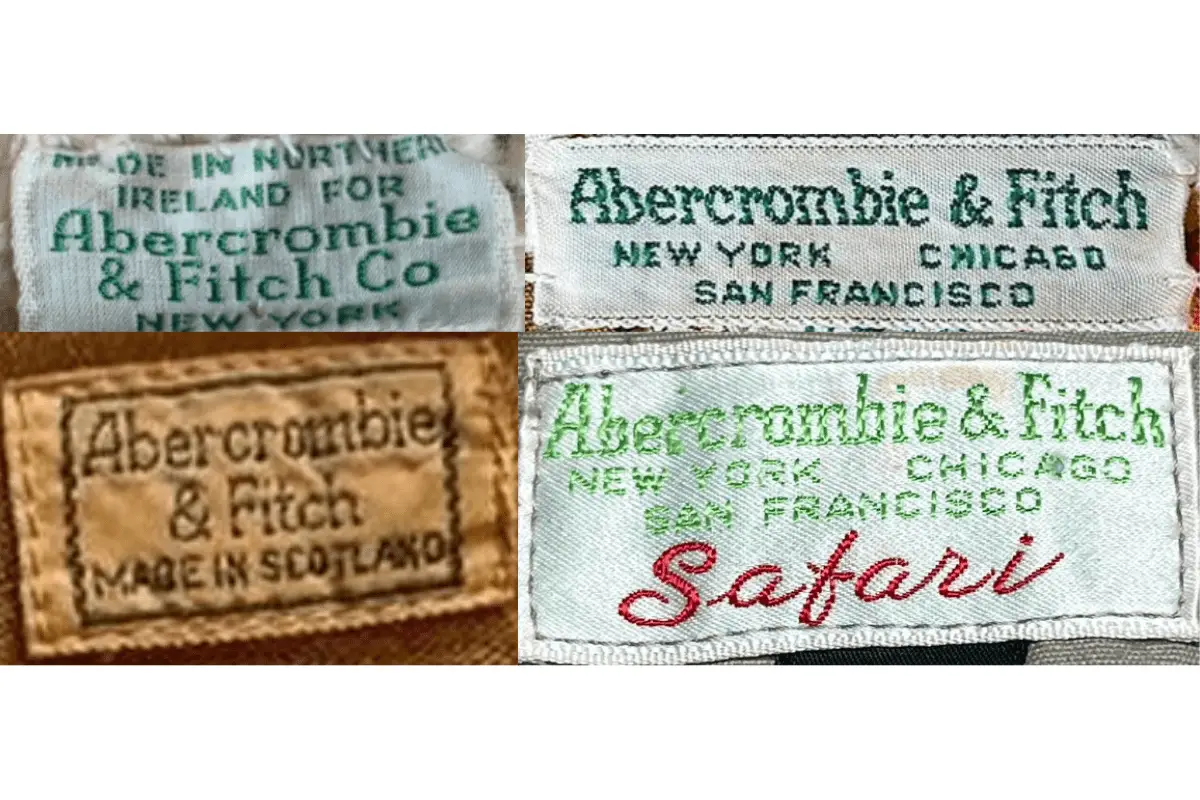
1960s Abercrombie & Fitch tags
1970s vintage Abercrombie & Fitch tags
- Tags often feature bold serif lettering.
- Include locations like New York, Chicago, and San Francisco.
- Some tags mention “Made in Scotland” or “Made in England.”
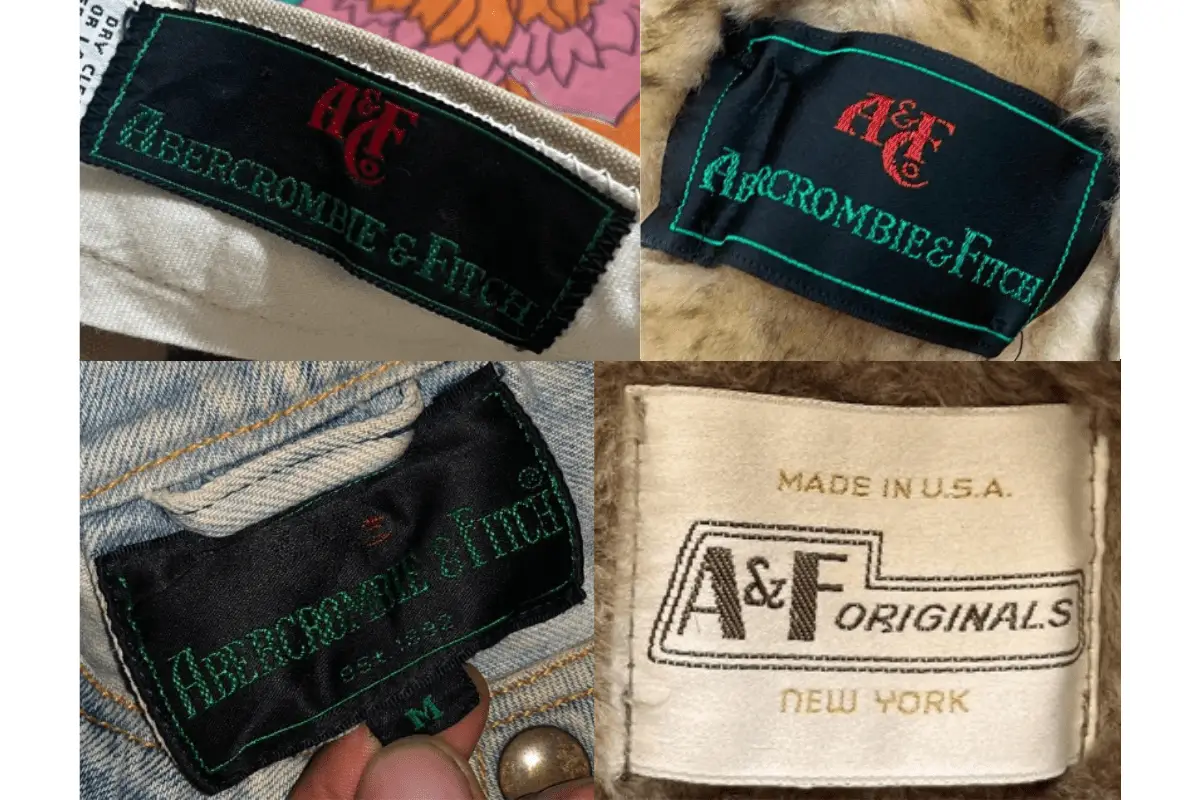
1970s Abercrombie & Fitch tags
1980s vintage Abercrombie & Fitch tags
- Branding often includes “A&F” alongside “Abercrombie & Fitch.
- Use of both bold serif and sans-serif fonts.
- Tags might have colorful elements and additional branding like “Safari.”
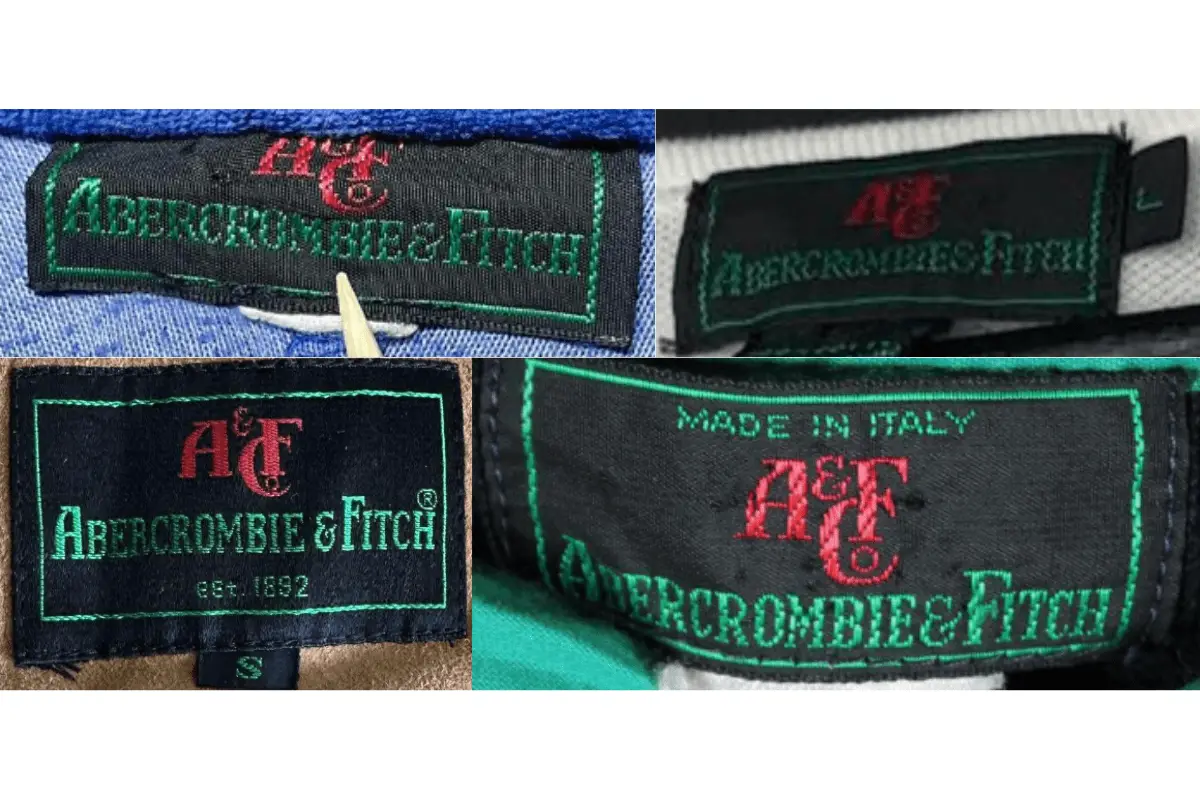
1980s Abercrombie & Fitch tags
1990s vintage Abercrombie & Fitch tags
- Tags feature “Abercrombie & Fitch” with a modern, cleaner design.
- Often include the establishment date “Est. 1892.”
- Commonly found in garments made in Hong Kong or the Philippines.
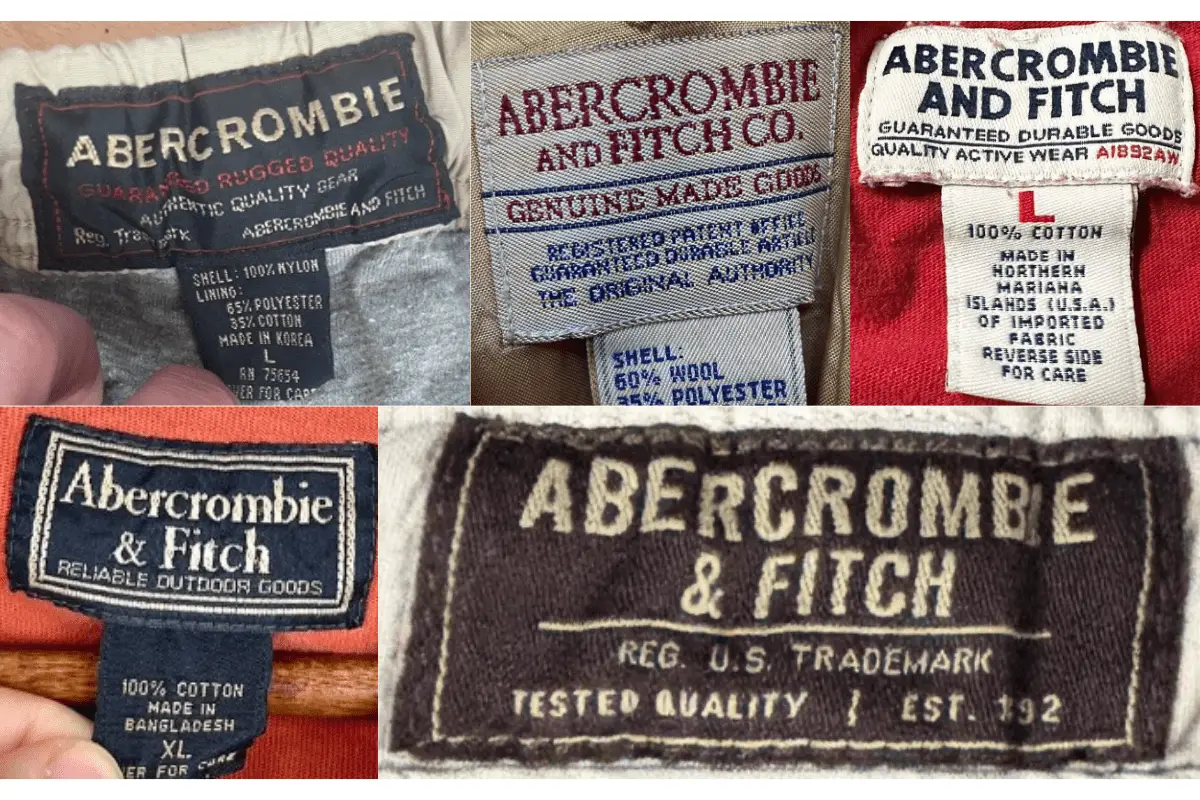
1990s Abercrombie & Fitch tags
2000s vintage Abercrombie & Fitch tags
- Introduction of more contemporary tag designs with darker colors.
- Tags often have “Abercrombie & Fitch” with bold serif lettering.
- Include size information on a separate tag, usually looped.
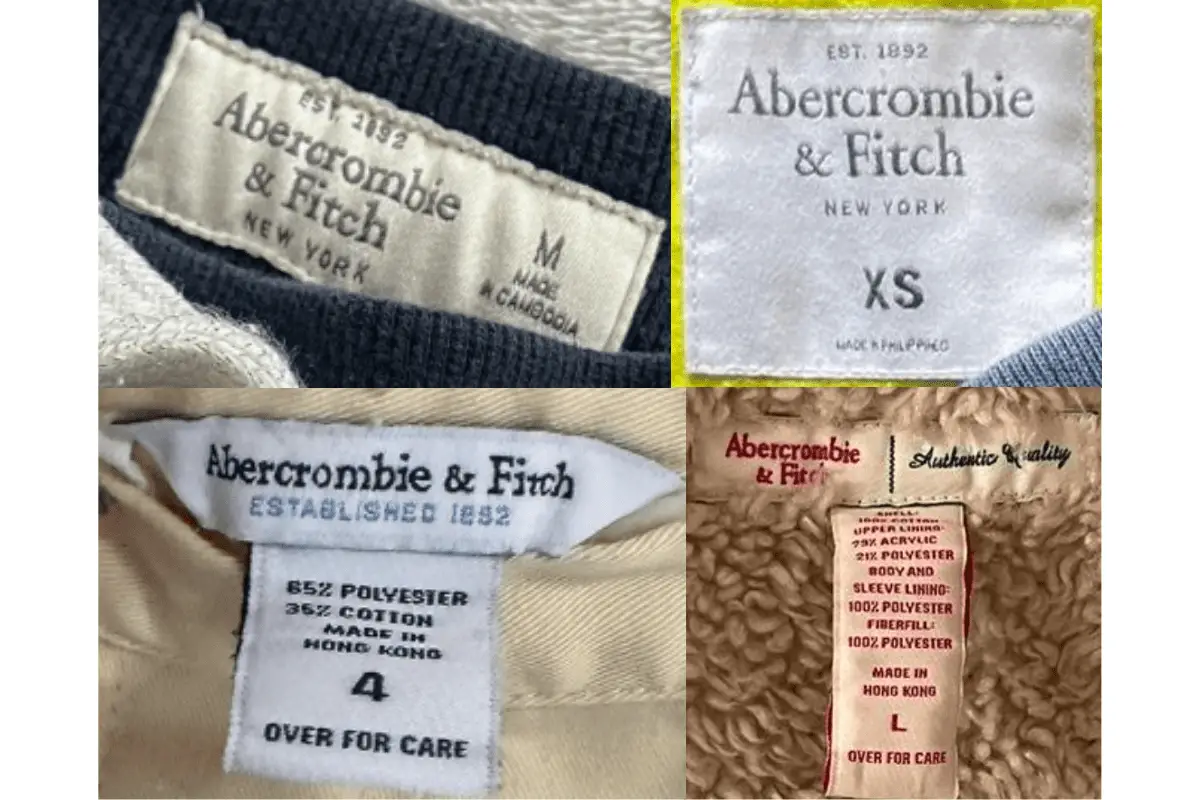
2000s Abercrombie & Fitch tags
2010s vintage Abercrombie & Fitch tags
- Modern tag layouts while retaining the classic logo and establishment date.
- Variety of tag materials and colors reflecting different styles and collections.
- Often include manufacturing countries like Vietnam, China, or Guatemala.
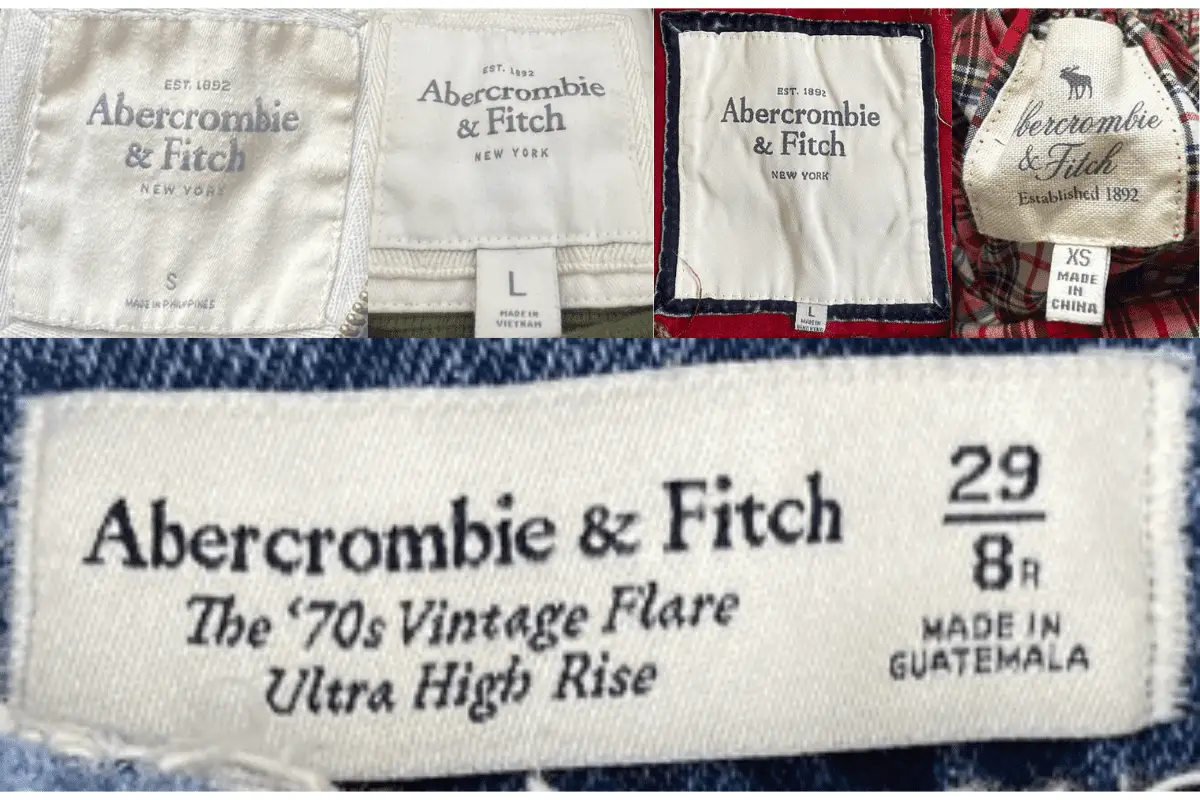
2010s Abercrombie & Fitch tags
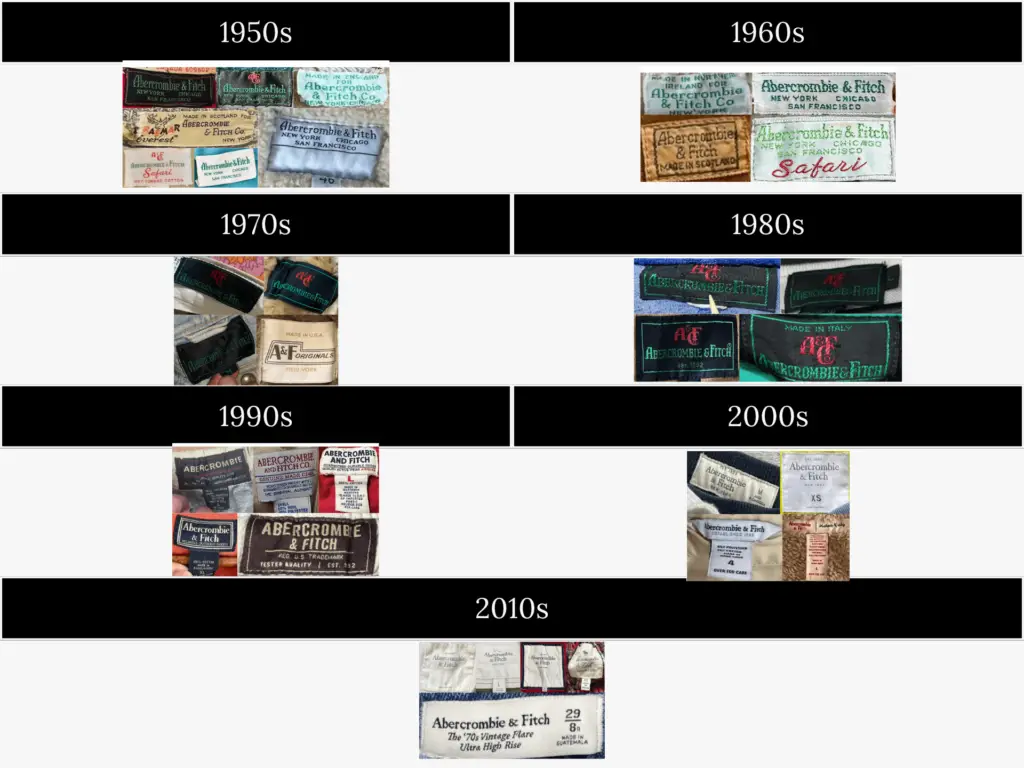
Abercrombie & Fitch tags by Year
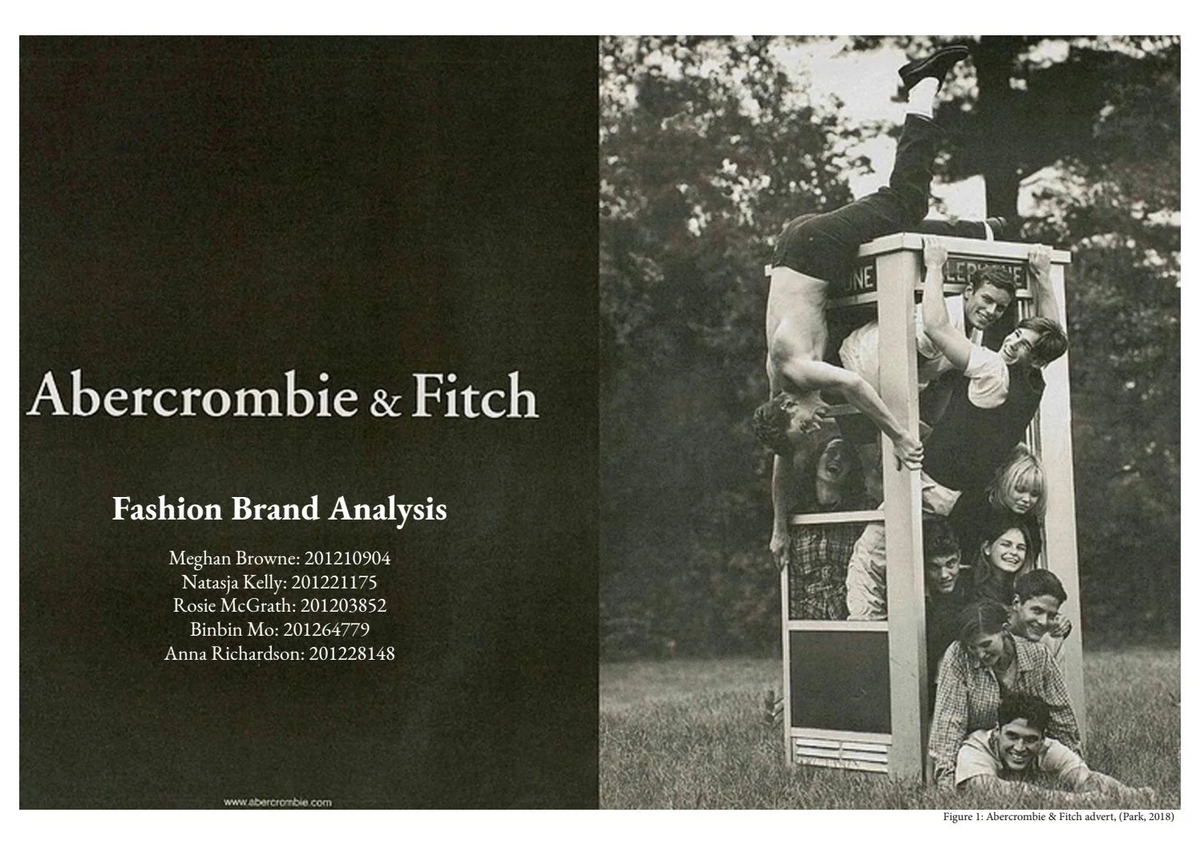



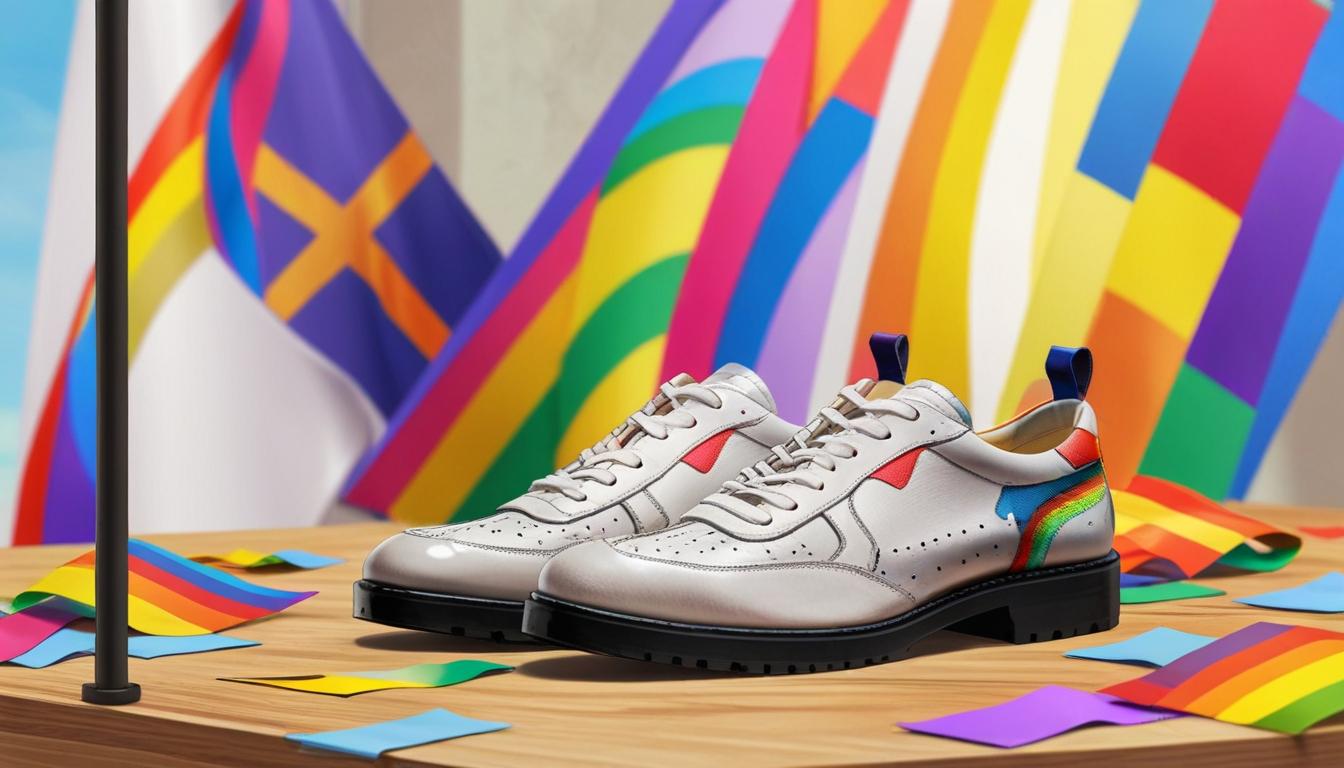
as I website owner I think the written content here is very good, thankyou for your efforts.
I would also like to add that in case you do not already have an insurance policy or maybe you do not remain in any group insurance, you might well really benefit from seeking the aid of a health insurance agent. Self-employed or individuals with medical conditions commonly seek the help of the health insurance broker. Thanks for your blog post.
Thanks for the good writeup. It in truth was once a enjoyment account it. Glance complicated to more delivered agreeable from you! By the way, how could we be in contact?
I just could not depart your website prior to suggesting that I actually enjoyed the standard information a person provide for your visitors? Is going to be back often to check up on new posts
Wow! Thank you! I continuously wanted to write on my blog something like that. Can I take a fragment of your post to my blog?